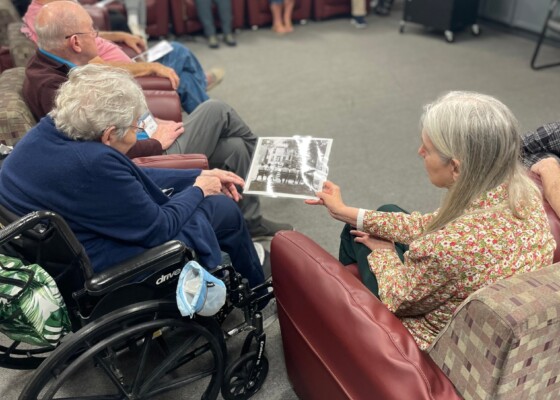Benjamin Harrison & Conservation
May 17, 2016The legacy of Hoosier environmental conservation can be followed all the way to the White House. Benjamin Harrison, the 23rd President of the United States and the only one to…
The legacy of Hoosier environmental conservation can be followed all the way to the White House. Benjamin Harrison, the 23rd President of the United States and the only one to be elected from Indiana, was a pioneer in environmental stewardship. After the Civil War, American expansion to the west accelerated: timber cutters, miners, and ranchers descended on the resource-rich land opened by the railroads. At first, policies to regulate and limit the exploitation of natural resources were thought to antithetical to American opportunity. As the United States approached the twentieth century, public opinion began to shift on the issue of land and resource conservation. President Harrison led the country during this time.
Harrison’s love of nature can be traced back to his visits to Yellowstone National Park. The park was established in 1872 and Harrison visited three times during his life. During his time in the U.S. Senate, he successfully fought to limit the Yellowstone land leased to hotels to 10 acres. He also introduced legislation to set apart a tract of land on the Colorado River. That bill failed but the land now known as Grand Canyon National Park would eventually be preserved in 1919.
During his administration, Harrison pushed for legislation to end the needless destruction of forests across the country. In response, Congress passed the Forest Preserve Act in 1891. Enabling the president to establish forest preserves (now known as national forests), the act set the foundations for the U.S. Forest Service. Harrison took the opportunity to protect forests in Colorado (including Pikes Peak), Oregon, California, and Washington as well as the New Mexico, Alaska, and Arizona territories. By the end of his term, he had preserved over 13 million acres of the country’s most significant natural sites.
On top of creating several national forests, Harrison also expanded the new national park system. He established the Sequoia, General Grant, and Yosemite national parks; they were the second, third, and fourth national parks, respectively. Harrison also set aside the first military park (Chickamauga and Chattanooga in Tennessee), the first urban park (Rock Creek in Washington, D.C.), and the first prehistoric Native American monument to come under federal protection, Casa Grande (Arizona).
Harrison’s push to protect the environment reflected his willingness to take on entrenched interests for the common good. Remarking on Harrison’s actions to protect our natural resources, the celebrated environmentalist John Muir remarked that “it took labor and moral courage to withstand the fierce opposition of local interests to do this.” Thanks to Harrison, millions of Americans can now enjoy our country’s natural beauty.
This year, the Indiana General Assembly passed an act to rename the Indiana Heritage Trust Fund the Benjamin Harrison Conservation Trust Fund (Indiana General Assembly). This trust is reserved for projects dedicated to preserving public lands. The act also expanded the amount of funding that the trust would grant to these projects across the state. It is truly fitting that in our 200th year as a state, we recognize Harrison’s legacy as an environmental steward.
Clearly, Harrison’s legacy is alive and well in Indiana. Every year, the Benjamin Harrison Presidential Site tells his story to over 27,000 visitors. Adults, students, and children learn more about the importance of prudent governance and responsible citizenship. We love to watch our guests’ eyes light up in recognition when they learn about Harrison’s work to establish so many national forests and parks. Thanks to Harrison, and programs like Next Indiana Campfires, new generations of Americans will develop an appreciation for the natural world.
—————————————————-
Next Indiana Campfires is a unique way to connect nature, literature and Indiana’s Bicentennial. The program is supported by the Efroymson Family Fund, the Nina Mason Pulliam Charitable Trust and Pulitzer Prizes Centennial Campfires. Indiana Humanities is supported in part by Lilly Endowment Inc. and the National Endowment of the Humanities.
This post, written by Joshua Moore is part of the weekly blog series devoted to the initiative. Moore is a current graduate student at the Lilly Family of School of Philanthropy at Indiana University. He recently completed a graduate internship with the Benjamin Harrison Presidential Site in Indianapolis, IN. Check back every Tuesday to learn more about Indiana’s great environmental literature, find out interesting facts about Hoosier stewardship, get all the latest program details and more.


